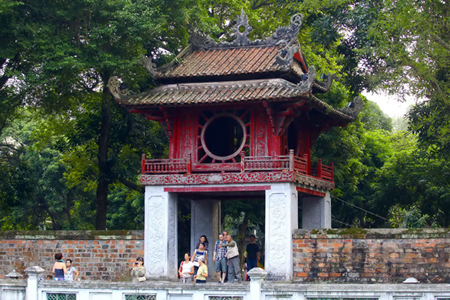Temple of Literature is the diverse complex of relics of Hanoi as well as an important historical – cultural site of Vietnam. This is the place where distinctive values of Vietnamese culture are honored and preserved. With such a thick history and a deep culture, Temple of Literature these days has become a significant tourist destination, attracting travelers when visiting the capital – Hanoi.
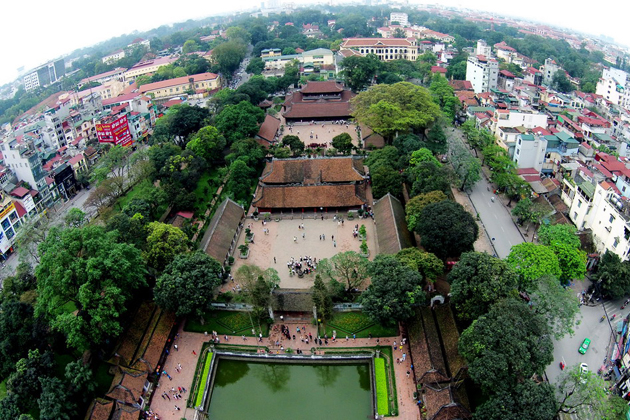
Temple of Literature was built in 1070 under the reign of King Ly Thanh Tong to worship the holy ancestors of Confucianism and also, had the function as a Royal School. The first student of that is Prince Ly Can Duc – the son of King Ly Thanh Tong. In 1076, King Ly Nhan Tong Quoc Tu Giam ordered to build another structure nearby as a school dedicated to the sons of the king and the courting. In 1253, King Tran Thai Tong changed it into National School, accepting all the children of civilians who had the outstanding academic ability. Until the dynasty of King Tran Minh Tong (1314 – 1329), the comprehensive teacher at that time – Chu Van An was appointed the principal, directly teaching the princes. In 1370, after his death, King Tran Nghe Tong built a shrine to worship him inside Temple of Literature, next to Confucius. In 1785, King Le Hien Tong changed Temple of Literature into Thai Hoc House. And in the Nguyen dynasty, it became Khai Thanh House.
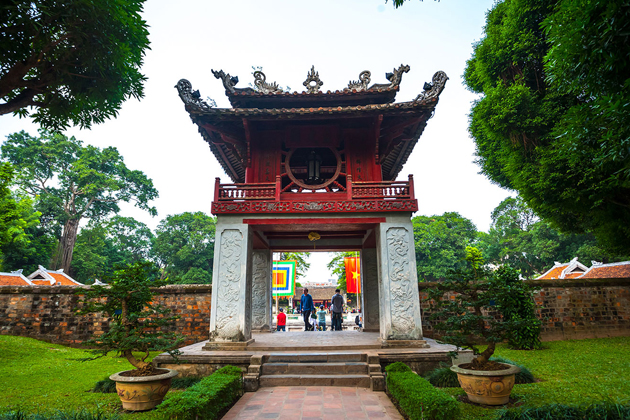
Structure
The entire architectural ensemble of Temple of Literature is symmetrically designed according to the north-south axis, imitating the shrine for worship Confucius in his hometown (Shandong, China). However, the scale as well as structure here are simpler and bring the traditional architecture of Vietnam.
In front of Temple of Literature there is a lake called Van Chuong Lake, formerly known as Thai Lake. In the middle of the lake, Kim Chau Mound stands that was the place for sightseeing before.
The main gate has four pillars, Stelae commanding horsemen to dismount (Ha Ma Stelae) is on the two sides and the complex is surrounded by a high wall. On the gate there are 3 words which were written in the ancient Chinese characters, meaning Temple of Literature Gate.
Inside, the temple is divided into 5 distinct areas, each area has a separated wall and a gate.
The 1st area is started from the main entrance to the Great Middle Gate (Dai Trung Gate), on the both sides there are small gates including Thanh Duc Gate and Dat Tai Gate.
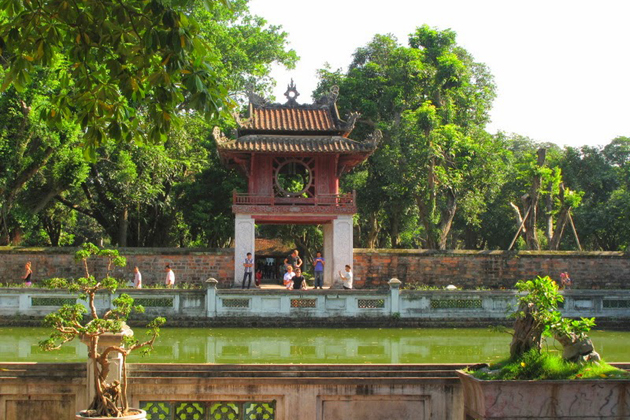
The 2nd area is included from the Great Middle Gate to Constellation of Literature Pavilion (Khue Van Cac). Constellation of Literature Pavilion is not massive but has a harmonious and beautiful architecture. It’s included 4 brick square pillars (85 cm x 85 cm) underneath with the role of propping the upstairs which owns the very beautiful wooden structures. The upstairs has four circular doors, the corridor and the roof are simply made of wood. The roof is designed according to the layering style of the square eight-roof structure, four round windows imitate radiating sun rays. It can be supposed that Constellation of Literature Pavilion brings all the essence of the sky upon the earth. This was often used as a place for scholars to enjoy written poetry. On the two sides, Bi Van Gate and Suc Van Gate lead to the area of stelaes of Doctors.
The 3rd area’s included the square lake of Thien Quang. Two sides are the area of stelaes of Doctors. Each stele is made of stone, engraved with the name of the valedictorians of national examinations at that time. Stelae is set on the back of a turtle. Currently, there remains 82 steles of examinations from 1442 to 1779.
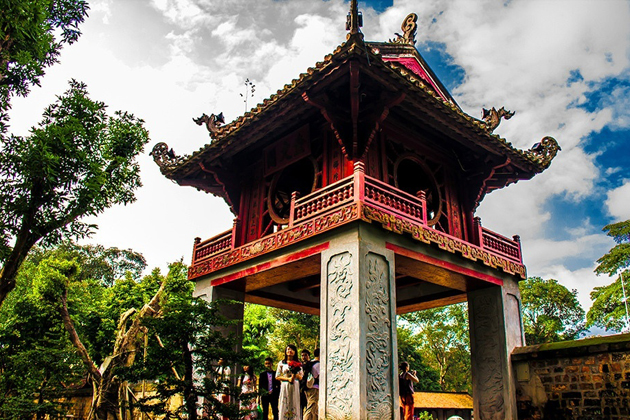
The 4th area is the center and the main structure of the Temple of Literature, consisting of two large projects in parallel and successive layout. The outside compartment is the Worship Hall (Bai Duong), and the inside one is Thuong Cung.
The 5th area is Khai Thanh Temple, worshiping Confucius’s parents, connected to the 4th area by Khai Thanh Gate. This area has been recently rebuilt.
The final architecture is the fore court and post court which were rebuilt in 1999. The forecourt has 9 compartments with 40 ironwood pillars, brick walls. Today, this is the place for exhibiting materials showing the educational tradition of generations of Vietnamese people. The fore court is connected to the post court through a small way. The post court is a wooden two-floor structure, in which, the downstairs consists of 9 compartments with 72 ironwood pillars, this is the honoring place the renowned national professor Chu Van An – a world cultural celebrity, the eminent educator of Vietnam. The upstairs is the place of worship of kings who contributed to construct the Temple of Literature as well as the Confucianism education of the nation, including Ly Thanh Tong, Ly Nhan Tong and Le Thanh Tong.
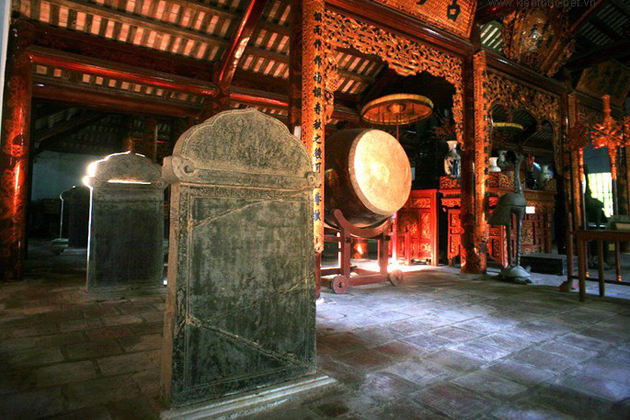
Currently, the Temple of Literature is also a venue for important cultural activities such as scientific seminars, thematic exhibitions, the place to praise outstanding valedictorians of universities in Hanoi and to give certificates for the titles of Professor, Associate Professor…or to celebrate book festivals, poetry days …

